Comments / Questions (60)
![]() Maja wrote:
Maja wrote:
Jeg er rendt ind i et problem, jeg forstår ikke hvordan maskeantallet passer efter BÆRESTK. med raglan og udtagninger jeg strikker en str. M så hvordan jeg skal gøre i det stykke så. På forhånd tak Maja
17.01.2025 - 07:30DROPS Design answered:
Hei Maja. Når du er ferdig med bærestykket er det økt 11 ganger = 44 økte m. På ermene er det økt 14 ganger = 56 økte m= 62 m som du hadde + 44 økte m på for/bakstykket + 56 økte m på ermene = 62+44+56 = 162 m. Så strikkes det 20 m (16 m/halve bakstykket + 4 m av A.1). Sett de neste 41 m på 1 tråd (5 m fra A.1 + 31 erm m+ 5 m av A.1). Legg opp 8 nye m. Strikk 40 m (4 m av A.1 + 32 m fra forstykket + 4 m av A.1). Sett de neste 41 m på 1 tråd (5 m fra A.1 + 31 erm m + 5 m av A.1). Legg opp 8 nye m. Strikk de resterende 20 m av bakstykket. mvh DROPS Design
20.01.2025 - 08:54
![]() Christine wrote:
Christine wrote:
Hallo, Bei Größe S: Ist es richtig, dass ich in den ersten beiden Runden jeweils 4M zunehme und in der 3.Runde dann 8M? Bin mir nicht sicher, wie ich die Runden zähle (oder ob ich 1.R: 4M, 2.R: 8M, 3.R:4M zunehme) Vielen Dank.
19.12.2024 - 18:01DROPS Design answered:
Liebe Christine, also ja genau, in S werden Sie für die Ärmel in jeder Runde 6 Mal zunehmen aber gleichzeitig für Vorder und Rückenteil in jeder 2. Runde 4 Mal zunehmen, so werden Sie abwechslungsweise 4 M (nur Ärmel = in jeder Runde) und 8 M (Ärmel in jeder Runde + Rumpf in jeder 2. Runde) zunehmen. Viel Spaß beim Stricken!
20.12.2024 - 07:03
![]() Mari Berge Lofthus wrote:
Mari Berge Lofthus wrote:
Hi! I'm contemplating knitting this sweater, but I have not been able to find any information about how many bundles of yarn I would need for a size L. I assume you can help with this. This is also my first time trying to knit from a written pattern. Is this sweater so easy to knit that it would be a good first project for a complete beginner in reading patterns? Have a wonderful day!
10.11.2023 - 10:51
![]() Anna wrote:
Anna wrote:
Dear Drops Design! I love the pattern, but I've got stuck with the raglan increases. Where should I place the markers? For the first increase in case of the body part of the raglan (size S), I knit 4sts (mid back) then make a YO, knit 1st, pass the marker, knit another st, and make a YO, but it means I ended up in pattern A.1, and there the first st is supposed to be a purl st not a knit st. Could you, please, help me with this? Thank You!
12.11.2020 - 22:44DROPS Design answered:
Dear Anna, we do not place markers for the raglan in this pattern, but if you want to add some, add them before and after each A.1, so that you will have in S: 5 sts, marker, A.1, marker, 3 sts (sleeve), marker, A.1, marker, 10 sts (front), marker, A.1, marker, 3 sts (sleeve), marker, A.1, marker, 5 sts (back piece). You then increase before the marker/A.1 to increase at the end of back/front/sleeves and after A.1/marker at the end of back/front/sleeves. You will either increase 4 sts (sleeves only when inc every round) or 8 sts (body and sleeves). Happy knitting!
13.11.2020 - 08:23
![]() Lauurence wrote:
Lauurence wrote:
Bonjour je ne comprends pas quand je dois faire les augmentations des manches et du dos et du devant . ou dois je mettre les marqueurs? pour les manches , il me semble que je dois faire une augmentation après A1 puis une avant A1 , et cela 2 fois ce qui fait bien 4 mailles en plus . mais pour le dos et le devant ou placer le marqueur? est ce que je dois augmenter a mi dos et mi devant ? ( 2 mailles et 2 mailles soit 4 mailles ) merci d avance
02.11.2020 - 11:07DROPS Design answered:
Bonjour Laurence, désolée pour la réponse tardive, vous augmentez pour le dos et le devant à un rythme différent des augmentations pour les manches, autrement dit, en fonction de la taille vous augmenterez soit 8 mailles (= dos et devant) soit 4 mailles (manches seulement par exemple quand on augmente tous les tours alors que l'on augmente tous les 2 tours pour le dos et le devant). Bon tricot!
26.04.2021 - 13:35
![]() Laurence wrote:
Laurence wrote:
Bonjour je fais ce pull En XL , pour l’augmentation des manches je dois faire un jeté de chaque côté de chaque motif A1 , donc 2 jetés x 4 motifs = 8 augmentations ? si le compte est bon il est impossible d avoir 192 mailles à la fin des augmentation car 64 mailles + 16x 4 + 16x 8 = 256 et non 192 ?? merci de m expliquer ou est l erreur , cordialement
02.11.2020 - 01:03DROPS Design answered:
Bonjour Laurence, vous augmentez pour le dos et le devant en XL: (8+4+4) fois 4 m = 64 m au total et pour les manches: (7+5+4) fois 4 m = 64 m; vous aviez 64 m + 64+64= 192 m. Bon tricot!
02.11.2020 - 09:31
![]() Anja wrote:
Anja wrote:
Offen gestanden ist mir nicht klar, warum die Drops-Pullover immer so designt sind, als müsste Frau aussehen wie Popeye nach einer Überdosis Spinat. Ernsthaft: 38 cm Oberarmumfang bei Gr. S? In den Projekten, die ich dazu gesehen habe, haben alle Frauen entweder den Armausschnitt verkleinert oder waren am Ende sehr unzufrieden damit. Ich muss das auch jedesmal anpassen.
10.08.2020 - 14:45
![]() Eve wrote:
Eve wrote:
Bonjour, j'ai enfin compris le diagramme c est que le 1er rang est sur l envers, mais par contre je galère avec les augmentations, est ce que quand vous mettez augmentez 6x c est 6x 1m ou 6m et est ce que les augmentations des 4ème rangs s ajoutent aux augmentations des 2ème rangs ou les remplacent ? Pour les augmentations dos et devant dois-je les repartir entre le milieu et les deux bouts du travail ? MERCI
03.05.2020 - 15:15DROPS Design answered:
Bonjour Eve, ce modèle se tricote en rond, pas en allers et retours - cf description du diagramme en rond ci-dessous. Vous augmentez différemment en fonction de la taille sur le dos/devant et sur les manches = vous augmentez en même temps soit 4 mailles seulement (manches ou dos/devant uniquement ) soit 8 mailles (manches + dos/devant). En taille S vous commencez par 6 fois tous les tours et 4 fois tous les 2 tours (= 1er tour = 8 augmentations, 2ème tour = 4 seulement). Bon tricot!
04.05.2020 - 12:48
![]() Eve wrote:
Eve wrote:
Bonjour il n'y à pas un problème avec A1 ? Ça ne me fait pas le même dessin que sur le modèle 😓
30.04.2020 - 22:36DROPS Design answered:
Bonjour Eve, lisez-vous bien le diagramme? A.1 se tricote en rond et se répète sur 2 rangs et 9 mailles ainsi: Tour 1: 1 m env, (1 m end, 1 m env) x 3, 1 m end, 1 m env. Tour 2: 1 m env, 7 m end, 1 m env. Vous obtenez ainsi des côtes 1 m jersey endroit/ 1 m point mousse entre les 2 m envers. Bon tricot!
04.05.2020 - 09:49
![]() Anna wrote:
Anna wrote:
Buongiorno purtroppo non riesco a capire gli aumenti per il davanti e il dietro. Se seguo le vostre indicazioni : fare un gettato prima del segno due maglie rasata è un gettato vado a prendere le maglie del diagramma 1. Cosa devo fare. Grazie mille
31.12.2019 - 15:17DROPS Design answered:
Buongiorno Anna, se fa riferimento agli aumenti sul corpo dopo la divisione del lavoro per le maniche, il diagramma A.1 non viene più lavorato: il lavoro prosegue a maglia rasata, come indicato all'inizio del paragrafo. Buon lavoro!
03.01.2020 - 12:19
Virginia#virginiasweater |
|||||||
|
|
|||||||
Knitted DROPS jumper with rib and raglan, worked top down in ”Snow”. Size: S - XXXL.
DROPS 157-29 |
|||||||
|
PATTERN: See diagram A.1. The diagram shows all rows in pattern seen from RS. RAGLAN: Inc on each side of every A.1 by making 1 YO. On next round K YOs twisted (i.e. work in back loop of st instead of front) to avoid holes. INCREASE TIP (applies to body): Work until 1 st remains before marker, 1 YO, K 2, 1 YO = 2 sts inc. Repeat in the other side. On next round K YOs twisted (i.e. work in back loop of st instead of front) to avoid holes. DECREASE TIP (applies to sleeves): Dec before marker and 1 st as follows: K 2 tog. Dec after marker and 1 st as follows: Slip 1 st as if to K, K 1, psso. ---------------------------------------------------------- JUMPER: Worked in the round, top down. YOKE: Cast on 52-52-56-56-56-56 sts on circular needle size 8 mm / US 11 with Snow. Then work rib as follows from mid back: K 1, * P 2, K 2 *, repeat from *-* until 1 st remains, K 1. When rib has been worked for 3 cm / 1", work 1 round in stockinette st while AT THE SAME TIME inc 10-10-8-8-10-10 sts evenly = 62-62-64-64-66-66 sts. Now work pattern as follows: 5-5-5-5-6-6 sts in stockinette st (= back piece), A.1, 3 sts in stockinette st (= sleeve), A.1, 10-10-11-11-12-12 sts in stockinette st (= front piece), A.1, 3 sts in stockinette st (= sleeve ), A.1, 5-5-6-6-6-6 sts in stockinette st (= back piece). There is now 1 repetition A.1 in each raglan. REMEMBER THE GAUGE! Continue with pattern like this AT THE SAME TIME on next round beg inc for RAGLAN – see explanation above! Inc differently on body and sleeves: BODY: Repeat inc every round 0-2-5-8-10-12 times, every other round 4-4-3-4-4-8 times and every 4th round 5-5-5-4-4-2 times. SLEEVE: Repeat inc every round 6-6-7-7-10-11 times, every other round 3-4-4-5-4-4 times and every 4th round 4 times in all sizes. When all inc are done and piece measures 24-25-26-27-28-29 cm / 9½"-9¾"-10¼"-10⅝"-11"-11⅜", there are 150-162-176-192-210-230 sts in total on needle. Then continue in stockinette st as follows: Work the first 18-20-22-25-28-32 sts, slip the next 39-41-43-45-49-51 sts on a stitch holder for sleeve, cast on 8 new sts under sleeve, insert a marker in the middle of these sts, work the next 36-40-45-51-56-64 sts, slip the next 39-41-43-45-49-51 sts on a stitch holder for sleeve, cast on 8 new sts under sleeve, insert a marker in the middle of these sts, work the remaining 18-20-23-26-28-32 sts. Work the new sts under each sleeve in stockinette st. BODY: There are now 88-96-106-118-128-144 sts for body. Continue in stockinette st. When piece measures 4 cm / 1½" from the new sts under sleeve, beg inc on each side of markers - READ INCREASE TIP! Repeat inc every 5½-4½-5-5-6½-7 cm / 2¼"-1¾"-2"-2"-2½"-2¾" 3-4-4-4-3-3 more times = 104-116-126-138-144-160 sts. When piece measures 51-53-55-57-59-61 cm / 20"-21"-21⅝"-22½"-23¼"-24"from shoulder, inc 0-0-2-2-0-0 sts = 104-116-128-140-144-160 sts. Now work rib from mid back as follows: K 1, * P 2, K 2 *, repeat from *-* until 1 st remains, K 1. Continue like this until rib has been worked for 5 cm / 2", bind off with K over K and P over P. SLEEVE: Slip sts back on double pointed needles. Work in stockinette st and cast on 8 new sts at the end of row = 47-49-51-53-57-59 sts. Insert a marker in the middle of the new sts under the sleeve. NOW MEASURE THE PIECE FROM HERE. Then work in stockinette st in the round – AT THE SAME TIME dec 1 st on each side of marker – READ DECREASE TIP. Repeat dec every other round 2 more times in all sizes = 41-43-45-47-51-53 sts. Then dec every 4-3½-4-3½-3-3 cm / 1½"-1¼"-1½"-1¼"-1"-1" 9-10-9-10-12-11 times = 23-23-27-27-27-31 sts. When sleeve measures 42-42-41-41-41-41 cm / 16½"-16½"-16"-16"-16"-16", inc 1 st in all sizes = 24-24-28-28-28-32 sts. Continue with rib as follows: K 1, * P 2, K 2 *, repeat from *-* until 1 st remains, K 1. Continue like this until rib has been worked for 5 cm / 2". Bind off with K over K and P over P. ASSEMBLY: Sew the holes under the sleeves. |
|||||||
Diagram explanations |
|||||||
|
|||||||
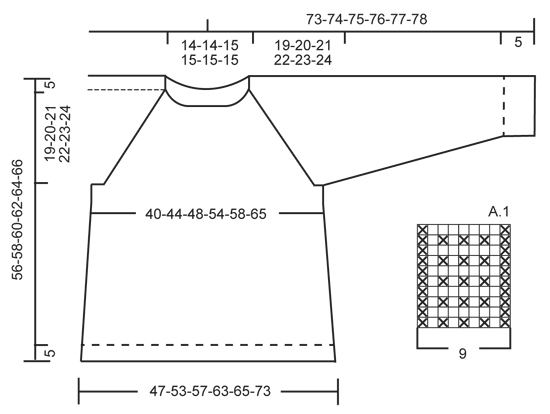 |
|||||||
Have you finished this pattern?Tag your pictures with #dropspattern #virginiasweater or submit them to the #dropsfan gallery. Do you need help with this pattern?You'll find 21 tutorial videos, a Comments/Questions area and more by visiting the pattern on garnstudio.com. © 1982-2025 DROPS Design A/S. We reserve all rights. This document, including all its sub-sections, has copyrights. Read more about what you can do with our patterns at the bottom of each pattern on our site. |
|||||||






















































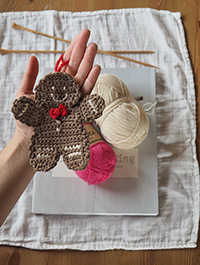
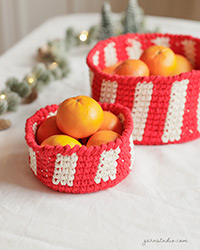
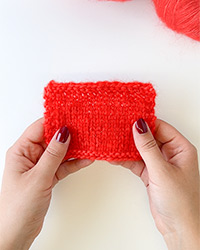
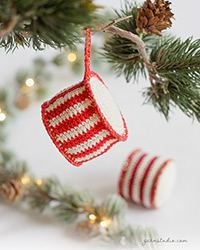
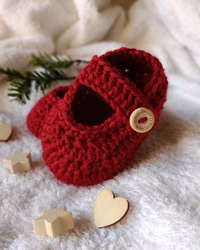
Post a comment to pattern DROPS 157-29
We would love to hear what you have to say about this pattern!
If you want to leave a question, please make sure you select the correct category in the form below, to speed up the answering process. Required fields are marked *.